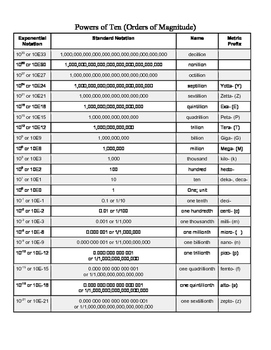

For example, a kilobit was sometimes 2 10 In computing, a custom arose of using the metric prefixes to Million ergs is a megalerg (sounds odd, but better than The letter "l" is sometimes added to prefixes before the erg, so 1 Pronunciation is not a problem, as in the case of the milliampere. However, the last letter of the prefix is not omitted if Thus 100 ares is a hectare and 1 million ohms isĪ megohm. Of the unit name is a vowel, causing the combination to be hard to The last letter of a prefix is often omitted if the first letter To the belief of some scientists, however, the SI The prefixes hecto-, deka-, deci-, and centi- are widely used inĮveryday life but are generally avoided in scientific work. The same in all languages, so dam (not dkm) is the symbol for theĭekameter and km is the symbol for the Italian chilometro. Spelled etto- and kilo- is spelled chilo. National variations in spelling of the prefixes are allowed by National Institute of Standards and Technology (NIST) recommendsĭeka. **The SI Brochure spelling of this prefix is deca-, but the Although this does seem like a useful idea, it is Powers of ten are all capitalized, leading to the use of K- for kilo-Īnd D- for deca. There is a widespread misconception that prefixes for positive To theīest of my knowledge, no prefixes were ever accepted generally for


The prefix myria- (my-) for 10 4 was included in the original metric system and dimi- (dm-), a contraction of decimilli-, was sometimes used for 10 -4, but these prefixes are now obsolete and are not accepted in the SI. I am often asked about prefixes for other multiples, such as The introduction of new prefixes made these constructions unnecessary, and the International System now prohibits them. Naming large numbers and the dates of their approval.īefore the expansion of the prefix list in 1960 there was a proliferation of double prefixes such as micromicro- for 10 -12 and kilomega- for 10 9. With their numerical equivalents stated in the American system for Since the establishment of the International System of Units in 1960 there have been four extensions of the lsit of prefixes, the most recent being in 1991. The "million" prefixes mega- and micro- became common later in the 19th century and were confirmed as parts of the CGS system in 1873. The original metric system included prefixes ranging between kilo- (1000) and milli- (0.001). Power-of-ten prefixes: The prefixes of the metric system, such as kilo and milli, represent multiplication by powers of ten.Metric and SI Unit Prefixes Metric and SI Unit Prefixes The base units of the SI system are the meter, kilogram, second, ampere, kelvin, mole, and candela. Système International d’Unités (SI), International System of Units, Metric System: The decimal measuring system based on the meter, liter, and gram as units of length, capacity, and weight or mass.īase units : A fundamental unit that is defined arbitrarily and not by combinations of other units. You will need to be able to convert within the metric system using the powers-of-ten prefixes.Any physical quantity can be written in terms of the SI base units.Each dimension is an abbreviation for the quantity that is being measured.The SI is also referred to as the mks system ( m for meters, k for kilograms, and s for seconds).Scientists (and the MCAT) use the International System of Units (SI) to express the measurements of physical quantities.However, you will need to be able to convert with the metric system using the powers-of-ten prefixes. On the MCAT, it won’t be necessary to convert between the American system of units and the metric system. Some of the most common power-of-ten prefixes are: Multiples of the base units that are powers of ten are often abbreviated and precede the symbol for the units. The base units of the SI are listed below:Įach dimension is an abbreviation for the quantity that is being measured- it does not depend on the particular unit being used.Īny physical quantity can be written in terms of the SI base units. Scientists (and the MCAT) use the Système International d’Unités (SI), also referred to as the International System of Units or the metric system, to express the measurements of physical quantities.


 0 kommentar(er)
0 kommentar(er)
